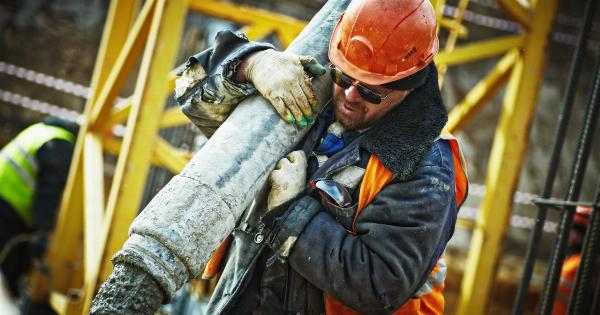In light of the ongoing global pandemic, it is crucial for workplaces to take necessary precautions to avoid virus outbreaks.
By implementing effective safety measures, employers can significantly reduce the risk of virus transmission among employees and visitors. This article will discuss several precautions that workplaces can adopt to create a safe and healthy environment.
Social Distancing Measures
One primary precaution that workplaces should take is to promote and enforce social distancing. This involves maintaining a certain physical distance between individuals to prevent the spread of viruses.
Employers can implement various strategies such as:.
- Arranging workstations to maintain a safe distance between employees
- Limiting the number of people in common areas like break rooms or conference rooms
- Reconfiguring seating arrangements to adhere to social distancing guidelines
- Staggering shifts or implementing remote work policies to reduce the number of people present in the workplace at a given time
Regular Sanitization and Hygiene Practices
Regular sanitization and adherence to good hygiene practices are crucial in preventing virus outbreaks in the workplace. Employers should:.
- Provide hand sanitizers or handwashing stations at convenient locations across the workplace
- Encourage frequent handwashing with soap and water for at least 20 seconds
- Ensure the availability of tissues, no-touch waste bins, and disposable wipes for cleaning surfaces
- Increase the frequency of cleaning and disinfecting common areas, shared equipment, and frequently touched surfaces
Improving Ventilation
A well-ventilated workspace plays a significant role in reducing the risk of virus transmission. Employers can take the following steps to improve ventilation:.
- Ensure that the HVAC system is regularly maintained and filters are cleaned or replaced frequently
- Maximize the intake of fresh outdoor air by adjusting ventilation systems
- Consider the installation of high-efficiency air filters to trap microscopic particles
- Encourage the opening of windows or use of fans to increase natural airflow whenever possible
Implementing Personal Protective Equipment (PPE)
Employers should provide appropriate personal protective equipment to employees based on their job roles and level of risk. This may include:.
- Facemasks or respirators to be worn in enclosed spaces or when social distancing is not possible
- Gloves for employees handling potentially contaminated materials
- Protective clothing for healthcare or essential service workers
Employee Education and Training
It is crucial to educate and train employees about safe practices to prevent virus outbreaks. Employers should:.
- Provide clear guidelines and communication on the implemented safety measures
- Offer training sessions on proper hand hygiene, social distancing, and the correct usage of personal protective equipment
- Encourage employees to stay home if they exhibit any symptoms of illness
- Promote a culture of open communication where employees feel comfortable reporting any concerns or potential exposures
Encouraging Remote Work and Flexible Schedules
To minimize the risk of virus outbreaks, employers can provide remote work options or flexible schedules for employees.
This allows individuals to work from the safety of their homes or adjust their working hours to minimize exposure to crowded public transport or high-risk situations.
Implementing Screening Protocols
Screening protocols can help identify potentially infected individuals and prevent virus outbreaks within the workplace. Employers can:.
- Conduct temperature checks and symptom screenings before employees enter the workplace
- Require employees to self-report any potential exposures or symptoms
- Work with local health authorities to facilitate testing and contact tracing, if necessary
Creating Isolation Facilities
In the event that an employee or visitor displays symptoms of illness while at the workplace, it is essential to have designated isolation facilities.
These facilities should be well-equipped and easily accessible, ensuring that potentially infected individuals can be isolated until they can safely leave or seek medical attention.
Regular Monitoring and Evaluation
Ongoing evaluation and monitoring of the implemented precautions are crucial to maintain a safe workplace environment. Employers should:.
- Stay updated on guidelines and recommendations from health authorities
- Conduct regular inspections to ensure compliance with safety measures
- Solicit feedback from employees regarding the effectiveness of implemented strategies
- Make necessary adjustments and improvements based on feedback and changing circumstances
Conclusion
Ensuring workplace safety and avoiding virus outbreaks require a comprehensive approach that includes social distancing, regular sanitization, improved ventilation, and employee education.
By implementing these precautions and regularly monitoring their effectiveness, employers can create a secure environment, safeguarding the health and well-being of their workforce.





























